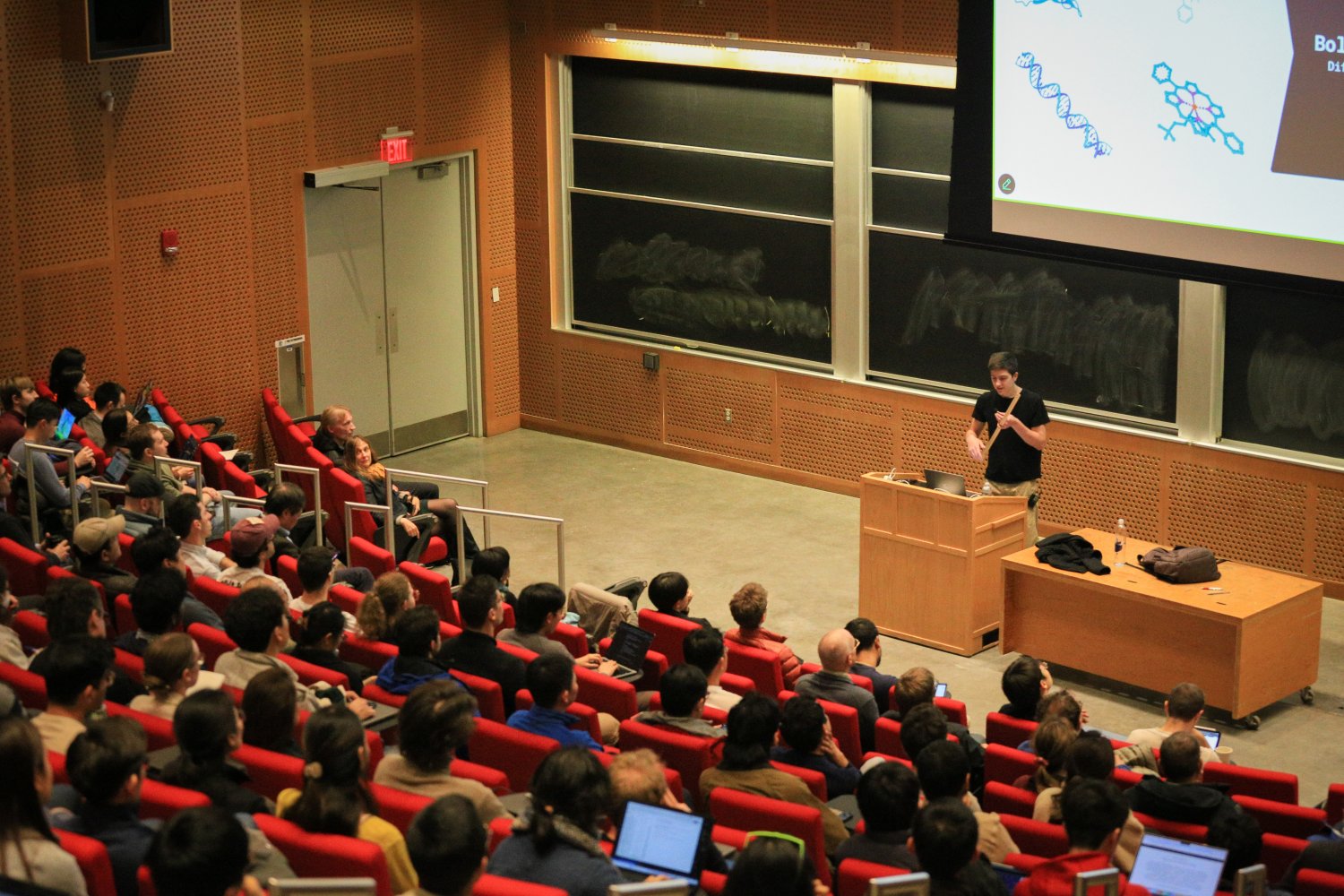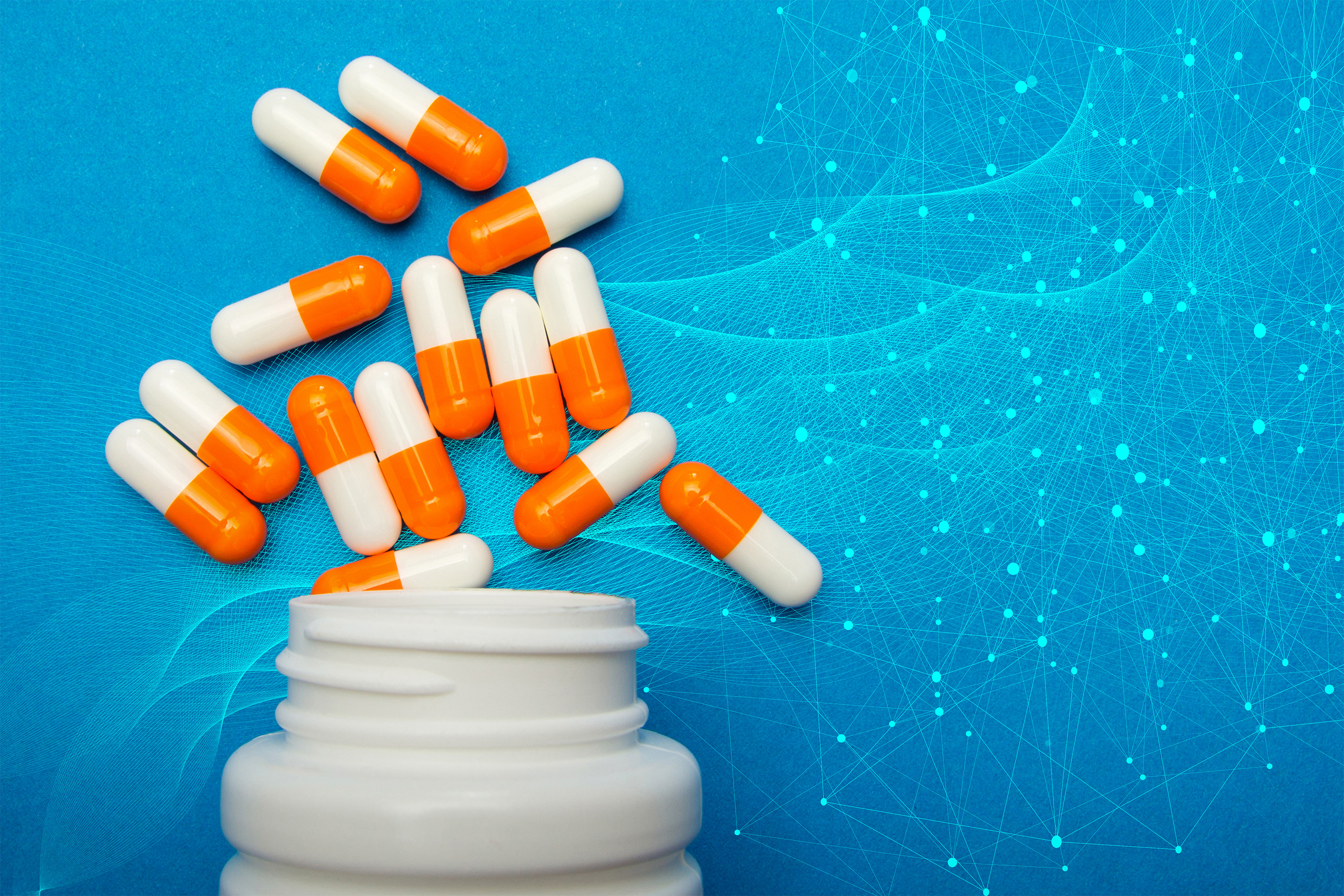Introduction to BoltzGen
More than 300 people across academia and industry attended a BoltzGen seminar hosted by the Abdul Latif Jameel Clinic for Machine Learning in Health (MIT Jameel Clinic). The event was headlined by MIT PhD student and BoltzGen’s first author Hannes Stärk, who announced BoltzGen just a few days prior. BoltzGen is the first model of its kind to generate novel protein binders that are ready to enter the drug discovery pipeline.
What is BoltzGen?
BoltzGen builds upon Boltz-2, an open-source biomolecular structure prediction model that predicts protein binding affinity. BoltzGen is the first model to go a step further by generating novel protein binders. Three key innovations make this possible:
- BoltzGen’s ability to carry out a variety of tasks, unifying protein design and structure prediction while maintaining state-of-the-art performance.
- BoltzGen’s built-in constraints are designed with feedback from wetlab collaborators to ensure the model creates functional proteins that don’t defy the laws of physics or chemistry.
- A rigorous evaluation process tests the model on “undruggable” disease targets, pushing the limits of BoltzGen’s binder generation capabilities.
How Does BoltzGen Work?
Most models used in industry or academia are capable of either structure prediction or protein design. However, they’re limited to generating certain types of proteins that bind successfully to easy “targets.” BoltzGen is different because it can tackle a variety of tasks and is not limited to specific types of proteins. According to Stärk, “A general model does not only mean that we can address more tasks. Additionally, we obtain a better model for the individual task since emulating physics is learned by example, and with a more general training scheme, we provide more such examples containing generalizable physical patterns.”
Validation and Potential
The BoltzGen researchers went out of their way to test BoltzGen on 26 targets, ranging from therapeutically relevant cases to ones explicitly chosen for their dissimilarity to the training data. This comprehensive validation process, which took place in eight wetlabs across academia and industry, demonstrates the model’s breadth and potential for breakthrough drug development. Parabilis Medicines, one of the industry collaborators that tested BoltzGen in a wetlab setting, praised BoltzGen’s potential, stating that it promises to accelerate their progress to deliver transformational drugs against major human diseases.
Impact on the Biotech and Pharmaceutical Industries
The open-source releases of Boltz-1, Boltz-2, and now BoltzGen bring new opportunities and transparency in drug development. However, they also signal that biotech and pharmaceutical industries may need to reevaluate their offerings. As Justin Grace, a principal machine learning scientist at LabGenius, pointed out, the private-to-open performance time lag for chat AI systems is shortening, and it may be even shorter in the protein space. This raises questions about how binder-as-a-service companies will be able to recoup their investment when open-source models like BoltzGen are available.
Future of Biomolecular Design
For those in academia, BoltzGen represents an expansion and acceleration of scientific possibility. According to senior co-author and MIT Professor Regina Barzilay, “A question that my students often ask me is, ‘where can AI change the therapeutics game?’ Unless we identify undruggable targets and propose a solution, we won’t be changing the game.” Stärk believes that the future of biomolecular design will be upended by AI models, and he wants to build tools that help manipulate biology to solve disease or perform tasks with molecular machines that have not even been imagined yet.
Conclusion
BoltzGen is a groundbreaking model that has the potential to revolutionize the field of biomolecular design and drug development. Its ability to generate novel protein binders and tackle a variety of tasks makes it a powerful tool for scientists and researchers. As the biotech and pharmaceutical industries continue to evolve, it will be exciting to see how BoltzGen and other AI models like it shape the future of drug discovery.
FAQs
- What is BoltzGen?: BoltzGen is an AI model that generates novel protein binders for drug discovery.
- How does BoltzGen work?: BoltzGen uses a combination of protein design and structure prediction to generate novel protein binders.
- What are the potential applications of BoltzGen?: BoltzGen has the potential to accelerate drug development and provide new treatments for diseases.
- Is BoltzGen available for use?: Yes, BoltzGen is an open-source model, and its code is available for use by researchers and scientists.
- How will BoltzGen impact the biotech and pharmaceutical industries?: BoltzGen and other AI models like it may disrupt the traditional business models of biotech and pharmaceutical companies, but they also offer new opportunities for innovation and collaboration.











